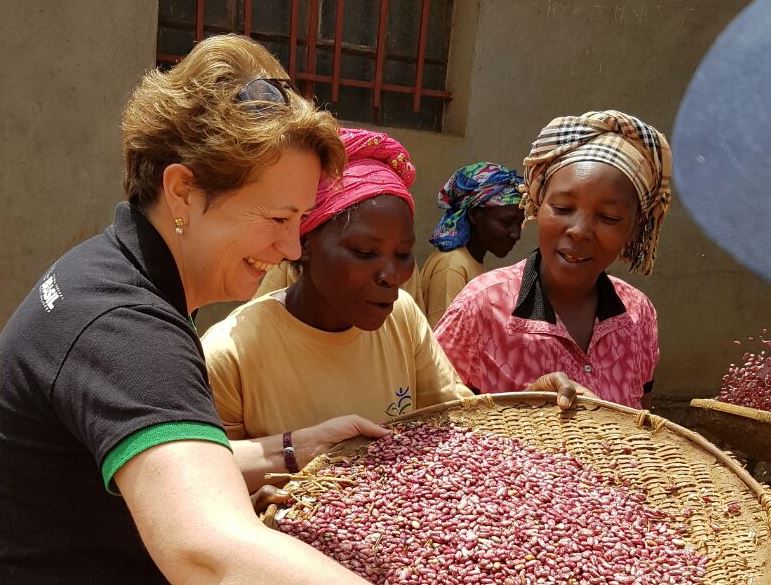This blog post was originally published in Thomson Reuters Foundation News
The British scholar Thomas Robert Malthus predicted back in the 1700s that famines would eventually occur as human populations exceeded food supplies. But what Malthus did not foresee is how a changing climate could exacerbate food shortages from Africa to the Arabian Peninsula to Southeast Asia.
Climate change is increasing the frequency and intensity of droughts, floods and storms. These climate-fueled disasters are limiting crop yields and destroying critical infrastructure, which has the potential to exacerbate food insecurity in regions already vulnerable to hunger and malnutrition.
For instance, changes in temperature caused by climate change are already affecting the production of staple crops. Higher temperatures have cut into yields, while changes in rainfall have diminished crop quality. In fact, a 2013 World Bank report projected that a combination of warmer temperatures, drought, and aridity will result in a 40 to 80 percent loss of cropland used to grow maize, millet and sorghum by the 2030s-2040s, which would have disastrous affects for communities already struggling with food supplies.
Given these phenomena, adaptation strategies are increasingly becoming major areas of scientific concern, as researchers try to devise technologies capitalizing on synergies from genetic and agronomic solutions that lend greater resilience to agricultural production. One strategy scientists are working on is the development of crops that are drought tolerant. This is done by breeders who exploit the traits of crops that evolved under harsh dryland conditions over thousands of years, and are hence adapted to harsh growing conditions.
Scientists working under the HarvestPlus alliance have developed four biofortifed crops that not only provide much-needed micronutrients to populations suffering from deficiencies, commonly known as ‘hidden hunger’, but that also display drought-tolerant qualities. In 2016, these crops fed an estimated 8.5 million people in Rwanda, Uganda, the DRC, Nigeria and Zambia.
With roughly 2 billion people suffering from hidden hunger, these adaptable and highly nutritious crops are already having an enormous impact on global health, while simultaneously ensuring that vulnerable populations have enough food despite a changing climate.
Over the past few years, we have succeeded in reaching 30 percent of farmers in Rwanda with beans that combine drought and heat tolerance with high-iron content, while in the DRC, our vitamin A rich cassava has fed more 75,000 households.
In Uganda, five new iron-rich bean varieties bred by our partners were released last year as part of the government’s strategy to tackle malnutrition and reduce anemia, especially in children and expectant mothers.
Instead of relying on supplements alone, farming communities can now buy and grow these beans as a cost-effective and sustainable way of boosting nutrition, knowing they will get a solid yield despite drought.
In parts of India, farmers are planting HarvestPlus’ iron-rich variety of pearl millet, commonly known as Dhanashakti. The most inherently drought-tolerant of all the major staples, this strain helped reverse iron deficiency in school-aged children in just six months.
And in the wake of devastating droughts last year that affected 330 million people and left Indian farming communities starved by crop losses, HarvestPlus is working with our local partners, such as Mahabeej and Nirmal Seeds, to ensure tens of thousands of farmers can access this new variety of high-yielding pearl millet, which also provides more zinc and is disease tolerant.
As scientists and researchers continue to develop crops that deliver essential nutrients, the private and public sector must work together to continuously seek ways to offset the harmful effects of climate change. By equipping vulnerable communities with the tools they need to grow more nutritious food in the face of rising temperatures, we can make the world a healthier place — and upend the dire predictions made by Malthus more than 200 years ago.
